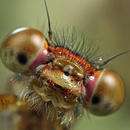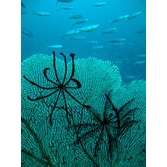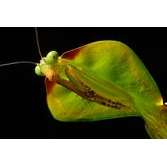Invertebrates on the brink

One fifth of the world's invertebrates may be heading for extinction according to 'Spineless', a report published today (Friday 31st) by the Zoological Society of London (ZSL), in conjunction with IUCN and the IUCN Species Survival Commission.
Digging up earthworms, chasing butterflies and collecting clam shells could become a thing of the past if enough isn't done to protect invertebrates. And if they disappear, humans could soon follow. These critters form the basis of many of the essential benefits that nature provides; earthworms recycle waste nutrients, coral reefs support a myriad of life forms and bees help pollinate crops.
More than 12,000 invertebrates from the IUCN Red List of Threatened Species were reviewed by conservation scientists who discovered freshwater species to be under the highest risk of extinction, followed closely by terrestrial and marine invertebrates. The findings from this initial group of global, regional and national assessments provide important insight into the overall status of invertebrates. Together they indicate that the threat status of invertebrates is likely very similar to that of vertebrates and plants.
Invertebrates are at risk from a variety of threats. Molluscs such as thick shelled river mussels suffer from pollution from agricultural sources and dam construction, which affects the quality of the water they live in. Crayfish such as the noble crayfish, are at risk from the impact of invasive species and diseases. What starts off as a local decline could lead to a global extinction, and recognising the growing pressures on invertebrates is critical to informing more effective conservation.

Dr. Ben Collen, head of the Indicators and Assessments unit at ZSL says: "Invertebrates constitute almost 80 per cent of the world's species, and a staggering one in five species could be at risk of extinction. While the cost of saving them will be expensive, the cost of ignorance to their plight appears to be even greater".
The highest risk of extinction tends to be associated with species that are less mobile and are only found in small geographical areas. For example, vertebrate amphibians and invertebrate freshwater molluscs both face high levels of threat – around one third of species. In contrast, invertebrate species which are more mobile like dragonflies and butterflies face a similar threat to that of birds, and around one tenth of species are at risk.

ZSL's Director of Conservation, Professor Jonathan Baillie added: "We knew that roughly one fifth of vertebrates and plants were threatened with extinction, but it was not clear if this was representative of the small spineless creatures that make up the majority of life on the planet. The initial findings in this report indicate that 20% of all species may be threatened. This is particularly concerning as we are dependent on these spineless creatures for our very survival."
Invertebrates not only provide a bewilderingly rich and varied component of the natural world, they are our natural capital; the engineers of the many benefits which humans accumulate from an intact and fully functioning environment.
"In the IUCN Species Survival Commission (SSC) we are now trying to expand the number of invertebrates species assessed for the IUCN Red List of Threatened Species," said Dr Simon Stuart, Chair, IUCN Species Survival Commission. "The early results of this work are included in this book. I very much hope that the expansion of conservation-related information on invertebrates will give them a much higher conservation profile in future."
"We need to successfully communicate the significance and value of invertebrate life, if we are to rescue the many thousands of threatened species from the brink of extinction." said Richard Edwards, Chief Executive of Wildscreen, an IUCN Red List partner working to help raise the public profile of the world's threatened species, through the power of wildlife imagery. "This important report highlights the impact we are having on the world's invertebrate biodiversity, species we all rely on for healthy natural systems, sustainable livelihoods and human well-being."
Human demand for resources is continually increasing the pressure on invertebrate populations. This report paints a clear picture of how biodiversity is changing, and will enable experts to implement successful conservation plans for those invertebrates which are struggling to survive.
More information: Read full report: www.zsl.org/science/research-p … ebrates,1987,AR.html
Provided by Zoological Society of London










010.jpg)




